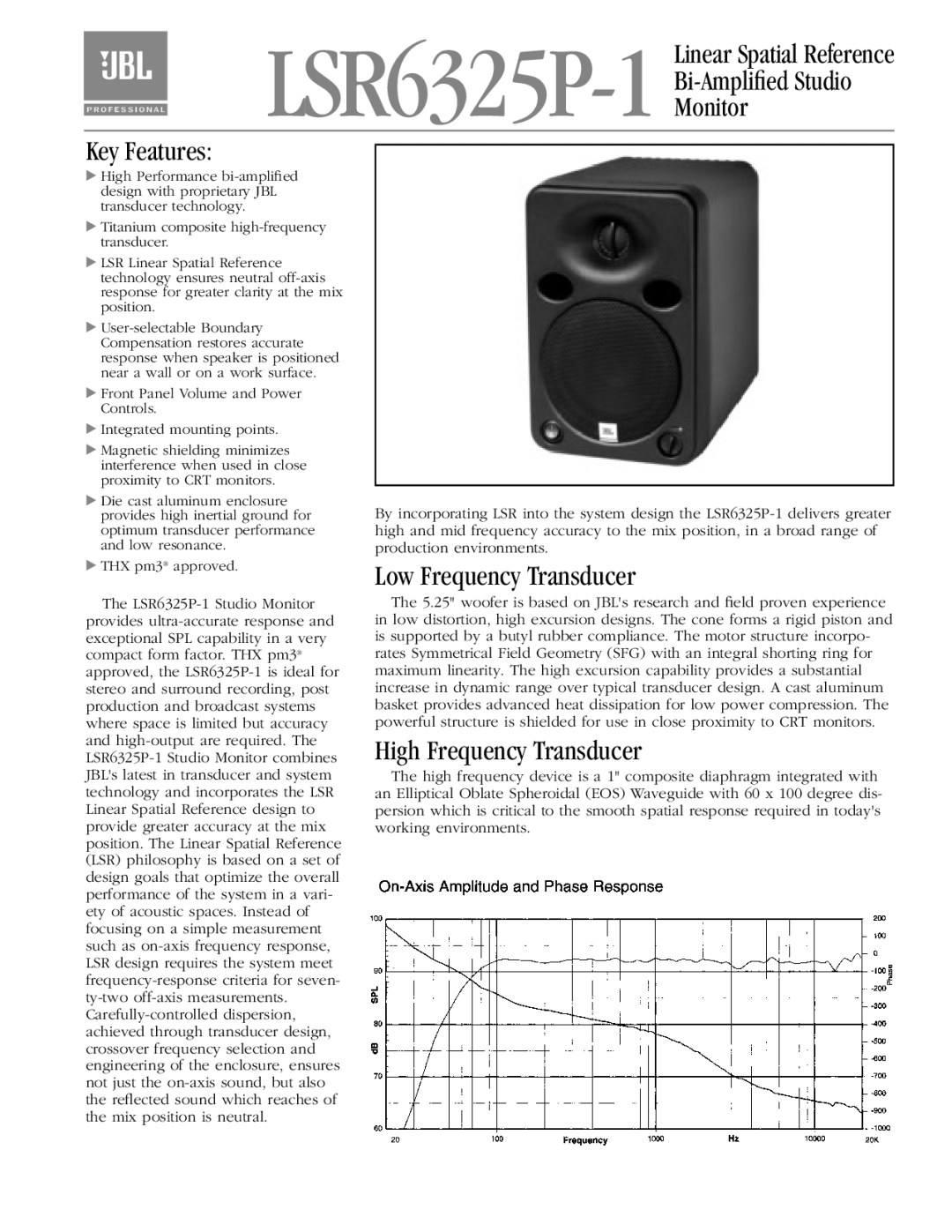LSR6325P-1 specifications
The JBL LSR6325P-1 is a professional studio monitor designed to provide exceptional sound quality and accuracy for audio engineers, musicians, and sound designers. One of the standout features of the LSR6325P-1 is its remarkable precision, ensuring that users can trust what they hear during the mixing and mastering processes. This monitor's design and technology come together to deliver an audio experience that meets the demanding standards of modern music production.Equipped with a 5.25-inch driver, the LSR6325P-1 excels in delivering a well-defined midrange frequency response. This is essential for accurately reproducing vocals and instruments, providing clarity that is crucial for effective mixing. The high-frequency response is managed by a 1-inch titanium compression driver, producing smooth and extended highs that enhance the overall sound profile. The combination of these drivers allows the LSR6325P-1 to create an immersive audio landscape with excellent detail.
One of the key technologies employed in the LSR6325P-1 is JBL’s patented Imaging Waveguide technology. This innovation optimizes the monitor's dispersion characteristics, enabling a wider sweet spot for listeners. This means that multiple people can work around the monitor without sacrificing accuracy, making it ideal for collaborative environments. Additionally, this technology helps in minimizing phase issues, contributing to a more coherent sound stage.
The LSR6325P-1 features a built-in bi-amplification system that delivers a total power of 150 watts, providing headroom and dynamic range that are essential for professional audio work. The active crossover design ensures that each driver receives the appropriate frequency range, enhancing both efficiency and performance. The front-firing port design aids in reducing boundary coupling and resonance, enhancing low-frequency response without compromising clarity.
Durability and aesthetics are also key characteristics of the LSR6325P-1. Its robust cabinet construction minimizes unwanted vibrations, while the sleek design makes it an attractive addition to any studio environment. Furthermore, the monitor offers extensive input options, including XLR and TRS connectors, allowing for seamless integration with various audio interfaces and mixing consoles.
In conclusion, the JBL LSR6325P-1 is a versatile and powerful studio monitor that delivers precise sound reproduction. With its advanced technologies, remarkable build quality, and user-friendly features, it stands out as a reliable choice for audio professionals seeking to achieve their sonic vision.

